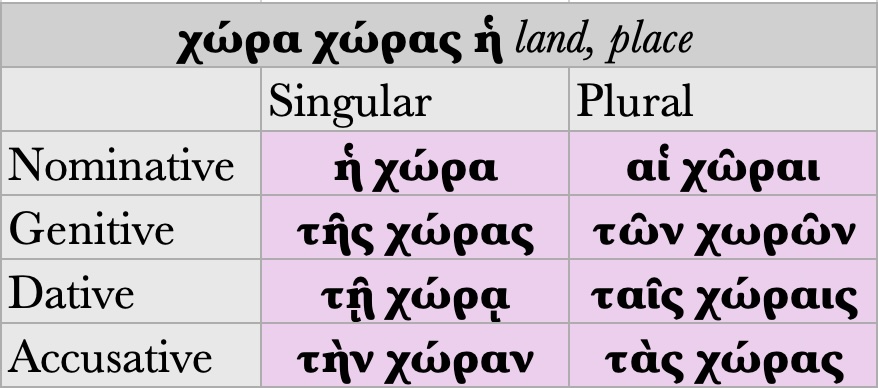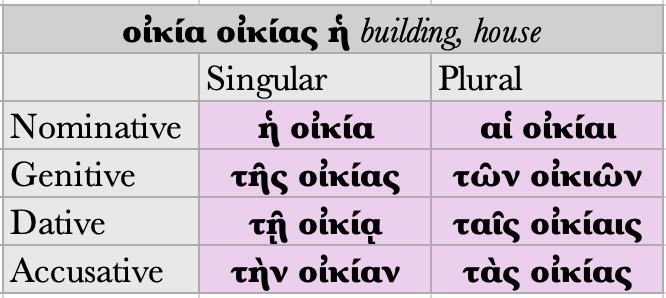19.8 In Attic and Koine Greek (but not in all Greek dialects), a second class of first declension nouns occurs when a first declension noun has a stem ending in –ε, –ι or –ρ. When this happens, ᾱ appears instead of η in all cases in the singular (e.g. οἰκίᾱ, οἰκίας, ἡ building, house, χώρᾱ, χώρας, ἡ land, place). This change is just a difference in pronunciation. These endings remain all long except for the nominative plural –αι (cf. S 216).
Note that when this change to ᾱ occurs in the genitive singular, its form now is identical to that of the accusative plural! The definite article and context within a sentence help distinguish between the two.

Charts JPG



